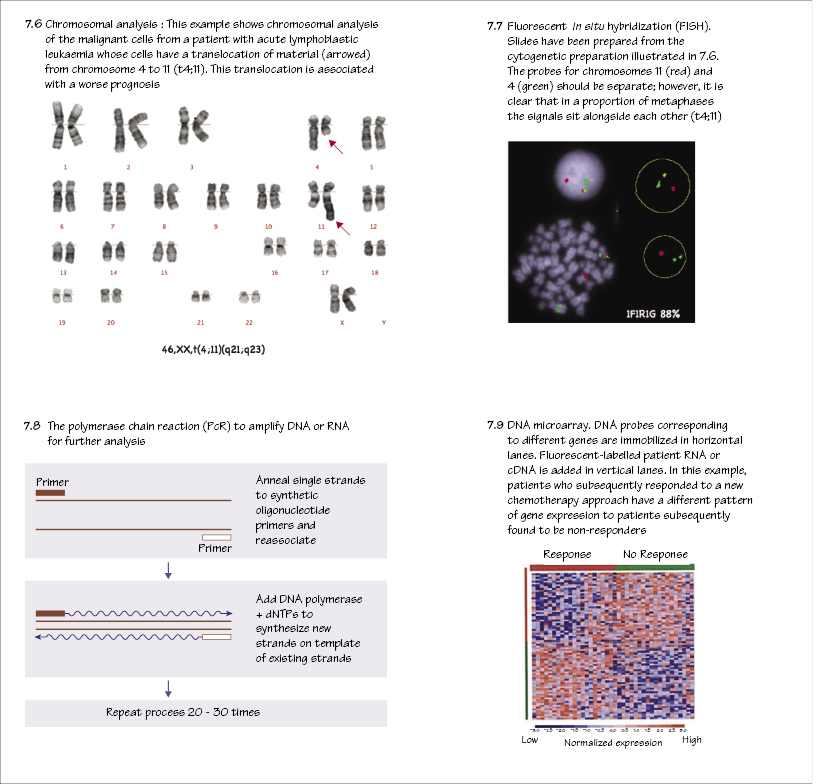
Routine tests
Full blood count (see Normal values Table 8.1)
Blood sample in sequestrene (ethylenediaminetetra-acetate, EDTA) anticoagulant is tested by an automated analyser. This counts the red cells and platelets after separation by size and the white cells after haemolysis of red cells (Fig. 7.1). The different white cells are counted according to their light refraction properties. Analysers provide the following:
- Haemoglobin concentration, haematocrit, red cell count, red cell indices (see Chapter 8)
- White cell count and differential (neutrophils, lymphocytes, monocytes; eosinophils and basophils)
- Platelet count and size
- Abnormal cells, e.g. nucleated red cells, myeloblasts, recorded as ‘abnormal cells’
- Analysers also provide automated reticulocyte counts and enumerate immature platelets (‘platelet reticulocytes’).
Blood film
A blood film is made by spreading a drop of blood on a glass slide, staining with a Romanowsky stain, and examining the film microscopically, initially at low power and then at higher power (see Fig. 8.2). Most haematology laboratories make a blood film if specifically requested to do so by the clinician, for patients with a known haematological disorder and for new patients who have an abnormal full blood count (FBC).
Erythrocyte sedimentation rate, plasma/whole blood viscosity and C-reactive protein
The erythrocyte sedimentation rate (ESR) measures the rate of fall of a column of red cells in plasma in 1 hour. It is largely determined by plasma concentrations of proteins, especially fibrinogen and globulins. It is also raised in anaemia. Normal range rises with age. A raised ESR is a non-specific indicator of an acute phase response and is of value in monitoring inflammatory disease activity (e.g. rheumatoid arthritis). A raised ESR occurs in inflammatory disorders, infections, malignancy, myeloma, anaemia and pregnancy. The plasma viscosity gives comparable information but is less widely used. Whole blood viscosity is also influenced by the cell counts and is therefore raised when the red cell count (erythrocrit), white cell count (leucocrit) or platelet count is grossly raised. C-reactive protein is raised in an acute phase response, e.g. to infection, and is valuable in monitoring this.
Bone marrow aspiration
Bone marrow is aspirated from the posterior iliac crest; a trephine biopsy (see below) is usually taken at the same time. Alternative sites for aspiration of marrow are the sternum and the medial part of the tibia (infants). The procedure is performed under local anaesthesia with or without intravenous sedation (Fig. 7.2). Indications for marrow aspiration are listed in Box 7.1. Aspirated cells and particles of marrow are spread on slides (Fig. 7.3), stained by Romanowsky stain and for iron (Perls’ stain; see Fig. 10.4). Specialized tests may also be performed (Box 7.2).
Stay updated, free articles. Join our Telegram channel

Full access? Get Clinical Tree




